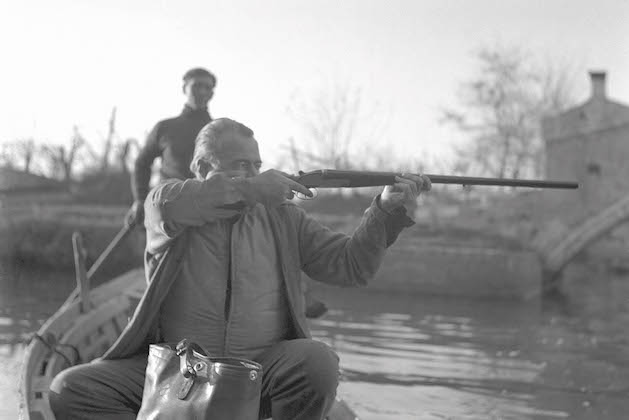Ernest Hemingway – a remarkable Shot and author
David Tomlinson celebrates the fine achievements of one of the most remarkable Shots of yesteryear, writing in Shooting Times

American writer Ernest Hemingway, sitting on a boat, taking aim while hunting ducks in a pond
It’s 60 years since Ernest Hemingway, one of America’s greatest writers and novelists, died. It’s an anniversary that has reminded many of his skills as an essayist, for his prose was short and punchy, his stories interesting and always eminently readable. While Hemingway’s life may have been celebrated by numerous tributes to his literary skills, less has been written about his passion for fishing and shooting — or what Hemingway would have called hunting — pursuits that remained an obsession throughout his eventful life.
Ernest Hemingway was born in Illinois, Chicago, in July 1899. His father was a keen outdoorsman and took young Ernest camping every summer in Northern Michigan, teaching his son how to hunt and fish, and instilling in him a love of adventure in wild places. Hemingway’s first serious adventure wasn’t, however, in the wilds, but in northern Italy where, at the end of World War I, he drove ambulances until being wounded. He wrote afterwards: “When you go to war as a boy you have a great illusion of immortality. Other people get killed; not you… Then when you are badly wounded the first time you lose that illusion and you know it can happen to you.”

Ernest Hemingway with pheasants in Idaho
Though he returned to the US to recuperate, he wasn’t to stay there long, for in 1922, and just married to the first of his four wives, he moved to Paris as foreign correspondent for the Toronto Star. It was a job that gave him the opportunity to travel, and to fish. He reckoned that the best trout fishing was in Spain, followed by Germany. It was a visit to the Spanish city of Pamplona in 1923 that inspired his fascination with bullfighting, described in Death in the Afternoon. Though nearly a century since it was written, it remains an illuminating insight to the corrida, while it captures Hemingway’s obsession with life and death.
By 1928 Hemingway had remarried and returned to America, eventually buying a house in Key West, where he lived until 1939. Though he spent his winters in the sub-tropical warmth of Florida, every summer he went to Wyoming — the “most beautiful country he had seen in the American West” — to hunt. Here his quarry were white-tailed deer, elk and grizzly bears. Florida didn’t provide much hunting, but the sea fishing was outstanding.

Hemingway on safari in Africa in summer 1933
Hemingway was a great traveller. At the end of 1933, he went on a 10-week safari to Kenya and what was then Tanganyika, his guide the white hunter Philip Percival who, more than 20 years before, had guided Theodore Roosevelt. He recalled his adventures in the Green Hills of Africa, including shooting black rhino and a magnificent greater kudu bull with 52in horns. However, his satisfaction at bagging this kudu was diminished when his friend Karl, “a terrible hunter with infinite luck”, killed an even bigger one. First published in 1935, it was called “the best written story of big game hunting anywhere” by a New York Times reviewer. It still makes a fine read.
Hemingway was a collector of firearms. His favourite big game rifle was a Westley Richards droplock double-barrelled .577 nitro express with a single trigger – it sold to a collector in 2011 for $340,000, its value greatly enhanced by its provenance.
Towards the end of his life, Hemingway suffered from not only poor physical health — he was a heavy drinker, leading to chronic liver disease — but also severe mental health problems. In July 1961, he shot himself with his favourite side- by-side.








